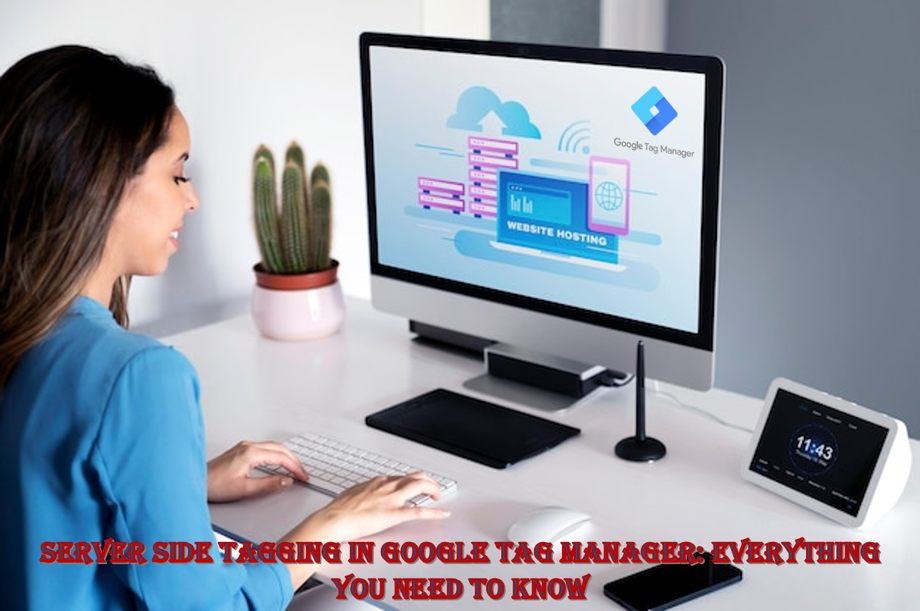If you’re a marketer or website owner, you’ve likely heard of Google Tag Manager (GTM). It’s a powerful tool that allows you to manage and deploy tags on your website without having to manually edit code. But did you know that there’s a new feature in GTM called server side tagging? In this article, we’ll explore everything you need to know about server side tagging in Google Tag Manager.
What is Server Side Tagging?
Server side tagging is a new feature in Google Tag Manager that allows you to move some or all of your tags from the client side (browser) to the server side. This means that instead of tags firing on the user’s browser, they will fire on the server before the page is loaded. This can improve website performance and data accuracy.
How Does Server Side Tagging Work?
Server side tagging works by using a server container, which is a separate container from your regular GTM container. This server container is hosted on Google Cloud Platform and is responsible for firing tags on the server side. When a user visits your website, the server container is triggered and the tags are fired before the page is loaded.
Why Use Server Side Tagging?
There are several benefits to using server side tagging in Google Tag Manager.
- Improved Website Performance
By moving tags from the client side to the server side, you can improve website performance. This is because tags are fired before the page is loaded, reducing the amount of time it takes for the page to load. This can lead to a better user experience and potentially increase conversions.
- Increased Data Accuracy
When tags are fired on the server side, they are not affected by ad blockers or browser settings. This means that you can get more accurate data and ensure that all of your tags are firing properly.
- Reduced Reliance on JavaScript
Server side tagging also reduces the reliance on JavaScript, which can be beneficial for websites that have a lot of tags. This can help improve website speed and reduce the risk of errors caused by conflicting tags.
How to Set Up Server Side Tagging in Google Tag Manager
The process of setting up server side tagging in Google Tag Manager is quite simple. Here’s how to do it:
Step 1: Create a Server Container
The first step is to create a server container in Google Tag Manager. To do this, go to your GTM account and click on the “Admin” tab. Then, click on “Server Container” and follow the prompts to create your server container.
Step 2: Configure Your Server Container
Once your server container is created, you’ll need to configure it. This involves setting up your tags, triggers, and variables, just like you would in a regular GTM container. However, keep in mind that not all tags are supported on the server side, so you may need to adjust your tag setup.
Step 3: Set Up Your Server Container in Your Website’s Code
Next, you’ll need to set up your server container in your website’s code. This involves adding a small snippet of code to your website’s header. This code will trigger the server container and fire your tags on the server side.
Step 4: Test and Publish Your Server Container
Before publishing your server container, it’s important to test it to ensure that everything is working properly. You can use the preview mode in GTM to test your server container and make any necessary adjustments. Once you’re satisfied with the setup, you can publish your server container and start using server side tagging.
Best Practices for Server Side Tagging
To get the most out of server side tagging in Google Tag Manager, here are some best practices to keep in mind:
- Use a Separate Server Container
It’s important to use a separate server container for your server side tags. This will help keep your regular GTM container clean and organized, and make it easier to troubleshoot any issues that may arise.
- Only Move Necessary Tags to the Server Side
Not all tags are supported on the server side, so it’s important to only move necessary tags to the server container. This will help ensure that your tags are firing properly and reduce the risk of errors.
- Test and Monitor Regularly
As with any changes to your website, it’s important to test and monitor your server side tagging setup regularly. This will help you catch any issues early on and make any necessary adjustments.
Real-World Examples of Server Side Tagging
Many companies have already started using server side tagging in Google Tag Manager with great success. For example, a large e-commerce company was able to reduce page load time by 50% and increase conversions by 10% by moving their tags to the server side.
Another company, a popular news website, was able to improve website performance and reduce the risk of ad blockers affecting their tags by using server side tagging.
Conclusion
Server side tagging in Google Tag Manager is a powerful feature that can help improve website performance and data accuracy. By moving tags from the client side to the server side, you can reduce page load time, increase conversions, and reduce the risk of errors. With the right setup and regular testing, server side tagging can be a valuable addition to your digital marketing toolkit.


